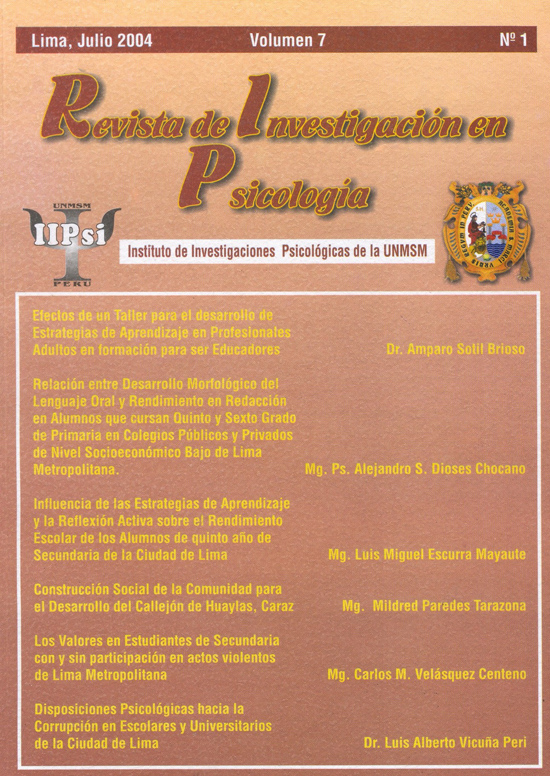Social construction of the community for the development of the alley of Huaylas, Caraz
DOI:
https://doi.org/10.15381/rinvp.v7i1.5140Keywords:
social construction, diversity, identity, andean communities's psycho social dimensions, Creo C questionnaireAbstract
OBJECTIVE: Describe the psycho social dimensions of the organizational construction of the Andean communities Cruz De Mayo, Pamapacocha, Queral, Miramar and Cajabamba. Determine the elements of identity and diversity that create the perception that the people have about their community. MATERIAL AND METHOD: Ninety Seven individuals were interviewed sixteen years of age or older with the translated Creo C questionnaire. A discriminate analysis was used to evaluate the translated forms of the Creo C questionnaire. The Chi Cuadrado De Pearson was used to evaluate the results from the questionnaire after interviewing was complete. RESULTS: Using a scale from one to four, in perception, productivity was the more important element that scaled 3.15 opposed to retribution at 2.14. When interviewed about their satisfaction, identity was higher at 3.17 opposed to hazard at 1.85. The standardized coefficients from the discriminative function indicate that each community is particular and helps distinguish individuals from one community to another by 97% to 100%, enough for certainty. CONCLUSIONS: Each community shares and develops the representation of the community that is particular. The Creo C is valid to use and analyze the group representation that the individuals have from their communities. The sense of belonging to a small village is the most powerful variable for group representation and to distinguish the perception that the members have about their community. Identity to small villages determine the subjective exchange. The low number of variables that distinguish the community suggests that identity exist in the community.Downloads
Published
Issue
Section
License
Copyright (c) 2004 Mildred Paredes Tarazona, Jesús María De Miguel Calvo, Maria José Carbajal Iturry, Miriam Laguna Sanchez

This work is licensed under a Creative Commons Attribution-NonCommercial-ShareAlike 4.0 International License.
THE AUTHORS RETAIN THEIR RIGHTS:
a. The authors retain their trademark and patent rights, and also on any process or procedure described in the article.
b. The authors retain the right to share, copy, distribute, execute and publicly communicate the article published in the Journal of Research in Psychology (for example, place it in an institutional repository or publish it in a book), with acknowledgment of its initial publication in the Journal of Research in Psychology.
c. Authors retain the right to make a subsequent publication of their work, to use the article or any part of it (for example: a compilation of their work, lecture notes, thesis, or for a book), provided that they indicate the source. of publication (authors of the work, magazine, volume, number and date).






